Sep 05, 2018
Rural Health Opioid Program Funds Care Coordination Efforts for Recovery
by Jenn Lukens
 For over 20
years, southern Ohio has been at the forefront of the
American opioid use crisis. What began with prescription
pain pill misuse and "pill mills" has led to heroin
dependency and one of the highest opioid-related overdose
death rates in the country (no longer available online).
Ohio's situation has been the focus for much of the
national conversation around the opioid epidemic.
For over 20
years, southern Ohio has been at the forefront of the
American opioid use crisis. What began with prescription
pain pill misuse and "pill mills" has led to heroin
dependency and one of the highest opioid-related overdose
death rates in the country (no longer available online).
Ohio's situation has been the focus for much of the
national conversation around the opioid epidemic.
The pressure doesn't necessarily come from being known as the epicenter of the problem. The pressure comes from working every single day on the problem that appears to be a moving target – a deadly moving target.
"The pressure doesn't necessarily come from being known as the epicenter of the problem. The pressure comes from working every single day on the problem that appears to be a moving target – a deadly moving target," said Marissa Wicker, Director of Prevention and Health Promotion at Portsmouth City Health Department. Her team realized early on that it would take a combined effort from local, state, and federal partners to solve the problem.
Backed by a collaborative of over 100 members, the Portsmouth City Health Department applied for a new grant offered by the Health Resources and Services Administration's Federal Office of Rural Health Policy (FORHP). The Rural Health Opioid Program (RHOP) provided grant funds for opioid treatment and recovery initiatives to rural communities. Ten applicants from across the nation were awarded up to $250,000 per year for three years (FY17-19), Portsmouth City Health Department being one of them. With the grant funds, they developed Recovery Gateway, duplicating a patient navigation model that works with clients through their existing syringe exchange program and county family drug court.
The Rural Health Opioid Program
This is the second set of opioid-focused grants awarded by FORHP's community-based division – the first mainly covered naloxone distribution and education. Each RHOP grantee is a member of a consortium with a vested interest in opioid use disorder (OUD) and a multi-faceted approach to identifying and assisting individuals with OUD. Grantees chose their own methods for addressing OUD, often including education, behavioral health counseling, peer support and care coordination, and medication-assisted treatment.
Like Portsmouth City Health Department, Kentucky's Lake Cumberland District Health Department and Bighorn Valley Health Center in Montana are also using the RHOP grant funds for care coordination efforts for those with OUD. To make access to care easier, case managers and nurse navigators guide designated populations through healthcare, social service, and legal settings.
They were able to take a step back, look at their community, and find a specific subpopulation or a specific way where they could make a difference using an evidence-based practice.
Michael Blodgett, a public health analyst at FORHP and RHOP's Program Coordinator, provides guidance and resources for RHOP grantees. Through regular communication and site visits, he noticed something all ten have in common: "They were able to take a step back, look at their community, and find a specific subpopulation or a specific way where they could make a difference using an evidence-based practice. By focusing their efforts, they have really done a lot of good for the people around them."
Navigation through an Ohio Family Drug Court & Syringe Exchange Program
The Portsmouth City Health Department (PCHD) saw an opportunity to change the tide of OUD, starting in the courtroom. Prior to Recovery Gateway, a Scioto County Probate Court judge would order treatment for drug offenders, but it was usually up to that individual to find a service. "We know that the addiction treatment industry can be sometimes hard to navigate. There are so many options – some places have waiting lists, some places offer medication and some don't. There are just a lot of variables," stated Wicker.
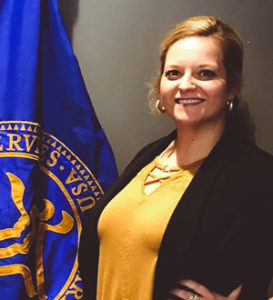
The judge now orders drug court participants to meet with the Recovery Gateway patient navigator who screens, assesses, and determines the best treatment plan for the individual. Their patient navigators are nurses or chemical dependency counselors who connect the individual to treatment agencies and continue working with them through treatment, communicating with the judge or probation officer on their progress.
Comprehensive harm reduction services can be a part of the treatment plan, providing access to naloxone, HIV and hepatitis C testing, medical care, continued patient navigation services, and the health department's syringe exchange program which allows for the exchange of used needles for new ones to limit the spread of HIV and hepatitis C.
While the patient navigator concept isn't new to healthcare, it's an innovative model regarding substance use, especially in the legal system. Wicker is seeing its positive effects: "This works so much better because now, clients are actually receiving treatment that is appropriate for them – not just whatever they can find."
Case Management for Kentucky Prisoners
Southcentral Kentucky's 66% increase in opioid dependency from 2013 to 2016 motivated the Lake Cumberland District Health Department (LCDHD) and their partner organizations to apply for the RHOP grant. Their focus? Bringing care coordination to jail cells. The grant funds support case management for incarcerated individuals who have OUD and are about to be released from prison.
Susan Adams is the Public Health Services Coordinator for LCDHD and is leading the grant program. Adams and three other case managers visit prisoners to help them set goals and develop a plan of action for staying drug free once released. They connect prisoners with social service partner agencies that provide housing, transportation, and jobs to prisoners re-entering society.
Once released from prison, there is a high risk that those with a substance use disorder will go back to using, "because that craving does not go away," explained Adams. "You are always going to be in recovery. That doesn't mean you won't go on to lead normal, everyday lives, but the things that trigger you will always be there." Because of this reality, the number one priority for the case managers is to set individuals up with rehabilitation immediately upon release, where they can regularly meet with a peer support specialist and get medical treatment. The two treatment facilities in LCDHD's 10-county region fill up quickly, so case managers often work with facilities beyond their service region and state.
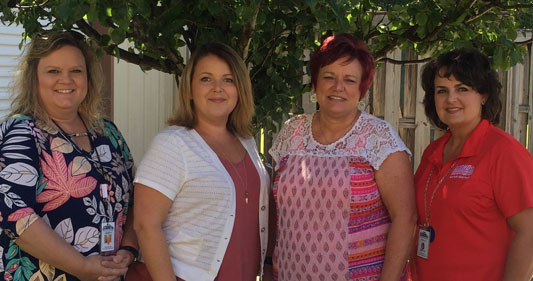
When I go into the cells, what I tell them is that we are here to walk alongside them. We are not here to tell them what to do, but we want to assist them in making better choices.
Adams explained that nearing their release date is the prime time to be working with prisoners who have OUD: they've been drug-free during their time in prison and they are usually more willing to make a change. But the key to making a successful connection, Adams said, is in the approach, "When I go into the cells, what I tell them is that we are here to walk alongside them. We are not here to tell them what to do, but we want to assist them in making better choices."
This video produced by Lake Cumberland District Health Department outlines their many initiatives to help with treatment and recovery, including the prisoner case manager program.
Reaching Out to New and Expectant Mothers in Montana
While methamphetamine remains the drug of choice in Big Horn County, Montana, law enforcement reports that the threat of opioids is drawing closer. Shelly Sutherland, Ed.D., is the Chief Community Development Officer at Bighorn Valley Health Center (BVHC) and also serves as the project director for their opioid program. Because having OUD while pregnant can hurt unborn children, and lifestyles of those who abuse opioids can lead to child neglect, BVHC's subpopulation of choice is new and expectant mothers.
With the RHOP grant funds, Sutherland's goal is to connect with every new and expectant mother in Bighorn County and on the Crow Reservation through nurse navigator home visits. Sutherland admits it's a big goal, especially in light of the barriers. "Because we have low rates of prenatal care here, just finding pregnant moms is a challenge," explained Sutherland. To help, the program is expanding their consortium and adding referral sources in order to reach more clients. What's even more challenging is finding mothers who have OUD, because none of them want to admit it. For that reason and because of the high prevalence of substance use in Big Horn County, nurse navigators talk about Medication Assisted Treatment (MAT) available through BVHC during each visit. Currently, BVHC has one waivered MAT prescriber and another who is in the process.
Really, the only way we can get ahead of this is to focus on the upstream – the preventative areas. At the same time, helping people access treatment who need treatment.
BVHC nurse navigators work to improve the whole health of parents and children, starting with the home environment. Parents are encouraged to enroll in their partner programs SafeCare (prevention and reduction of child maltreatment) and Parents as Teachers (equips parents to help children develop in a healthy way).
"We feel like the use of substances is so extensive in our community that to try to get everyone who needs treatment into treatment would be incredibly expensive and beyond our scope," said Sutherland. "Really, the only way we can get ahead of this is to focus on the upstream – the preventative areas. At the same time, helping people access treatment who need treatment."
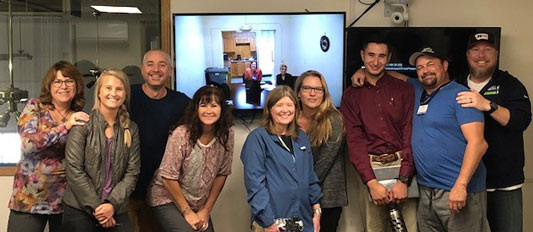
Community Education to Reduce Stigma
Because research demonstrates that education helps decrease stigma, one of the RHOP grant requirements is community education. "It's humanizing the issue and teaching them that addiction is a treatable disease. Especially in rural areas, it can help bring about that profound change with more people involved," stated Blodgett. Because many grantees launched their efforts in the fall of 2017, most are starting to see a change in their community's attitude about opioid use disorder.
It's humanizing the issue and teaching them that addiction is a treatable disease. Especially in rural areas, it can help bring about that profound change with more people involved.
Since the beginning of their efforts, a barrier that the Portsmouth City Health Department has tried to overcome is public perception concerning the syringe exchange program. "You always have people thinking that you're enabling drug use," explained Wicker. "While it's not going to solve the problem, it will stop the spread of diseases." Through community education and promoting the program's tagline, "prevention, not permission," their efforts have helped. The number of people taking advantage of the program has increased, and the county's hepatitis C cases have decreased by 40% over the past four years, even as surrounding counties' numbers are rising. Collaborating with the local hospital has increased referrals, and the public's apprehension about the syringe exchange program has lessened.
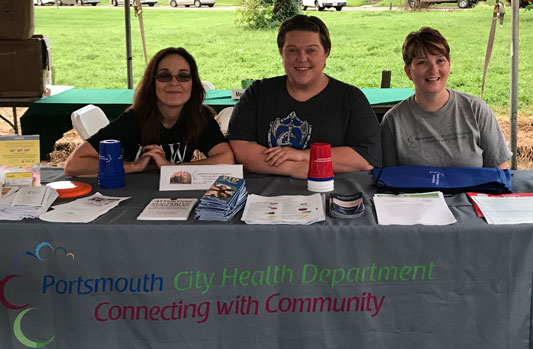
Lake Cumberland's consortium is working to increase community education about OUD by partnering with a local hospital in a county-wide event called "Dining with the Docs." At the event, one of Lake Cumberland Regional Hospital's doctors will present about OUD and the effects of opioids on the brain. Adams said that these events are just the start of community education efforts in Kentucky's Lake Cumberland area: "We just want people to have an understanding of what we are trying to do."
Due to rural workforce conditions and chronic nurse shortages, BVHC is cross-training emergency room nurses on MAT outreach and the SBIRT (Screening, Brief Intervention, and Referral Treatment) approach. Additional nurses will be trained to administer Suboxone for patients experiencing withdrawal, supervised by a waivered MAT provider. BVHC is also educating providers on opioid prescribing guidelines. They hope to enroll a group of providers that will meet regularly to discuss this and other harm reduction efforts.
Video Extra: RHOP Project Making a Difference
The Arkansas Rural Health Partnership of Arkansas's Delta region is also one of the ten RHOP grantees. The following video features one doctor's journey with opioid use disorder and how he and the Partnership are helping others with OUD find freedom.
Care Coordination Leads to Early Success
As the grantees are wrapping up their first year, each is experiencing success, making a difference in the lives of those with OUD and their greater communities.
Ohio's Recovery Gateway program has helped 65 clients so far. Part of their evaluation plan is to determine how the family drug court and syringe exchange program is affecting their clients. They are working with researchers to conduct an analysis, and will present the results at a public health summit in 2019. Wicker shared that the secret to their success is the many partners who collaborate to work for the good of their clients. "At the end of the day, we all want the same thing for our community, but we all have very different ideas of how to get there. So when you can bring everyone to the table…I think it's really helpful as a community."
I'm always careful to tell them that they didn't get here overnight and aren't going to get out of it overnight. It's a process.
There are almost 90 prisoners enrolled in Kentucky's case management program; over 95% have either achieved or are working toward their goals. "I'm always careful to tell them that they didn't get here overnight and aren't going to get out of it overnight. It's a process," said Adams. So far, they are the only program in Kentucky that operates this kind of navigator relationship with prisoners.
Montana's BVHC's program has seen positive outcomes in the lives of the ten new or expectant mothers enrolled. One has received MAT treatment during pregnancy, allowing her to keep custody of her children. Two have been moved from a harmful home situation to safe shelter. Three have enrolled in the Parents as Teachers program. As more women join the program, Sutherland knows that the real payoff will be seen down the road: "I get goosebumps just thinking about how keeping women not using during pregnancy and at least the first year of their child's life will impact brain development, attachment, and all those things associated with positive outcomes for children."
Making sure that people can access care and have support to stay healthy is the priority of care coordinators. Through these three innovative programs, communities in Ohio, Kentucky, and Montana are giving hope to people struggling with opioid use disorder and serving as a model for rural communities throughout the country.
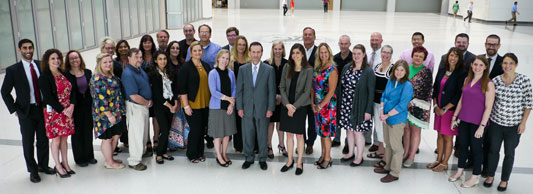
Additional RHIhub Resources
- Rural Response to the Opioid Crisis – A topic guide that identifies funding opportunities, resources, and tools related to the opioid crisis in rural America. The guide points to Models and Innovations, which offer practical examples for preventing, treating, and reducing OUD.
- Rural Prevention and Treatment of Substance Abuse Toolkit – Offers evidence-based examples, promising models, program best practices, and resources for implementation.
